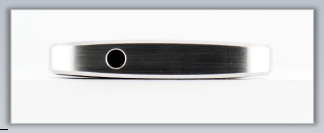A number of iPhone prototype designs were revealed in court documents, filed by Apple, during the past few weeks. While the documents did give a rare peek into Apple’s secretive internal prototype designs, it didn’t include the reasons for which many of those designs were shelved.
Network World took a look the testimony in the ongoing Apple-Samsung trial, and found the reasons for the shelving of some of those prototypes.
The testimony is of Apple’s former designer Doug Satzger, who worked on the first few generations of the iPhone.
He reveals that at one point of time, Apple was considering an iPhone design which had curved glass on both sides. The prototype design, images of which we’ve embedded below, got shelved due to technical difficulties and cost constraints.
In his testimony, Satzger says:
The technology in shaping the glass, the cost relative to shaping the glass at the time, and some of the design features of this specific shape were not liked.
[…]
The technology at the time had a lot to do with it. The qualities of the glass at the time had a lot to do with it. These are models — I’m trying to remember a time frame — that were before gorilla glass and before a lot of the other factors.
Another design Apple considered was similar to the iPod mini, which had an extruded aluminium design.
On being asked why this design didn’t make it through, Satzger said:
My recollection of it was that to get the extruded aluminum design that was applied to the iPod to work for the iPhone, there were too many added features to allow it to be comfortable and to work properly…
[…]
If you put an iPod up to your ear, the sharp edges, because of the processes, aren’t comfortable, and you can’t get antennas to work properly in a fully enclosed metal jacket. So each one of those things needed to apply other features that started.
So what do you think? Would you have preferred an iPhone with curved glass or extruded aluminium design? Let us know in the comments.

